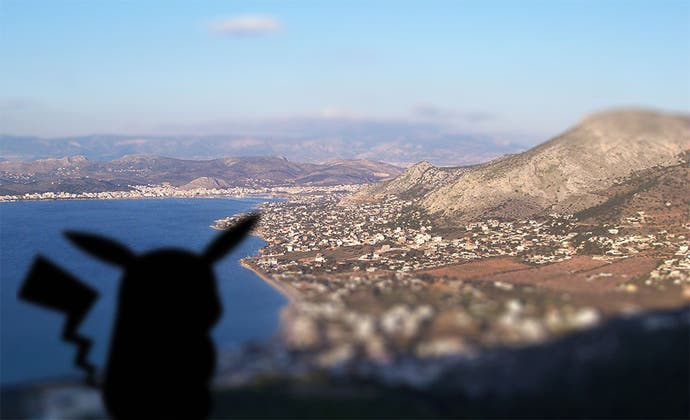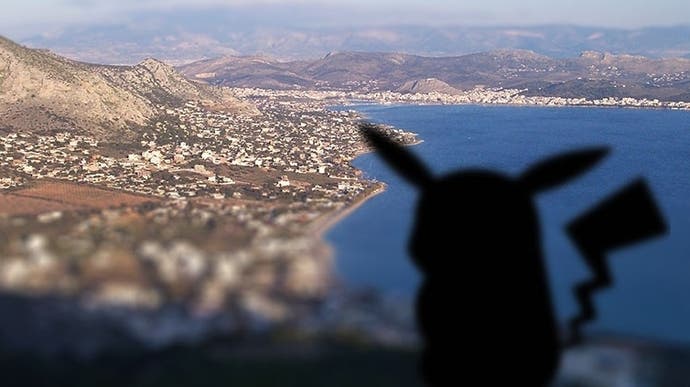The island where you can't play Pok¨Śmon Go
UPDATE: And now you can.
UPDATE 15/10/19: The island of Salamis has got its Pokémon back.
In a delighted post to the SilphRoad Pokémon reddit, island resident "Giannhsblazer" shared the good news:
"Last night a member of our community opened Pokémon Go and came across a huge surprise. After seven months of no spawns, the whole Saronic Gulf, including islands Salamina, Aegina, Agkistri and Poros, is once again full of them. Our combined efforts, gave us a great victory, and from last night, we are once again able to go out and hunt!
"This is a very important and emotional change of tides for us, since we can enjoy this lovely game without having to rely only on bosses or having to travel far from home, in order to find something to catch.
"We, as a community, owe a great deal of gratitude and appreciation, to every single person here that even with his/her upvote helped this effort come true. Words are needless, nobody really expected something to change that fast! This is a salvation for our game here, thanks to all of you!"
It's a great result for players in the region and a surprisingly speedy fix from developer Niantic after gaining international attention last week.
ORIGINAL STORY 11/10/19: Around 40,000 people live on the Greek island of Salamis, 10 miles off the coast of Athens. Among its population is a small but dedicated community of Pokémon Go players. Or there was, at least, until earlier this year - when all wild Pokémon vanished.
Pokémon Go, like many other real-world AR games, runs on map data provided by Open Street Maps (OSM). This service is widely-used because it is open source. It's also editable by anyone - a Wikipedia-like version of Google Maps.
But, like Wikipedia, inaccuracies can creep in. On OSM itself, this isn't a huge issue - changes are noticed by other editors and any obvious errors are reverted. But while OSM map data is constantly updated, games which pull data from it are not as thorough.
Pokémon Go uses map data last imported many months ago. The advantage to this is you can't just go on OSM, flag your back garden as a park, and instantly watch Pokémon appear in-game. The downside, though, is things flagged wrongly on the map don't get quickly updated and fixed.

Map data consists of the obvious things you can see - roads, parks, places of worship - and then other layers. Areas can be tagged with a certain label so that services which use OSM data can see more technical types of information.
This is what has happened on Salamis, where the whole island was flagged with the "natural=bay" tag. Within Pokémon Go, this tag tells Niantic's servers "do not spawn Pokémon here", presumably because it sounds like the whole area is underwater. And while the tag has now been removed on OSM itself, this version of the map has not been imported into Pokémon Go.
You can see a similar effect happening at train stations. If the area has been tagged correctly as part of the railway network in OSM, no Pokémon will spawn in-game. The only way to get around this is to have a PokéStop present in which you can insert a lure - an item you usually have to pay for.
"It is such a pity for us to be unable to play the game that unites us and that we enjoy."
"We have been spawnless for seven whole months," Salamis Pokémon player Nick told me.
"Since the last OSM update in the game our island has been left without any wild spawns, since someone wrongfully tagged our island, along with many more islands, as bay areas."
Nick and other islanders have attempted to contact Niantic's customer support about the issue several times - but never with much success.
"Our reports to Niantic have gone either unanswered or replied to with general responses such as 'Go play somewhere else', 'Visit a place with more PokéStops' (the island has about 400 PokéStops in total), or even the ridiculous answer of 'Check if your mobile data/GPS is active'."
So, this week, Salamis residents have gone to the game's global community to raise awareness. On the game's SilphRoad reddit, a thread about the island's issue has gained a huge amount of attention.
Says Nick: "This is really our final shot before completely giving up on the game.
"It is such a pity for us to be unable to play the game that unites us and that we enjoy."
Two possible solutions have been floated amongst fans. Either Niantic pulls in new OSM map data to correct the issue, or a change is made with how the game handles the "natural=bay" tag so it no longer blocks spawns.
And, in the last 24 hours, there has been a sliver of hope on that last suggestion. Thanks to research by SilphRoad data scientist WoodWose, Niantic has now changed how Pokémon Go interprets a similar part of the OSM data it handles - in this case, for locations where the game can generate its invite-only EX Raids.
The hope among fans - and certainly those based in Salamis - is Niantic will pull another change, this time for the "natural=bay" tag. We've asked Niantic if it is aware of the issue, and what it can do to solve it, so Nick and his friends can get back to playing as soon as possible.










